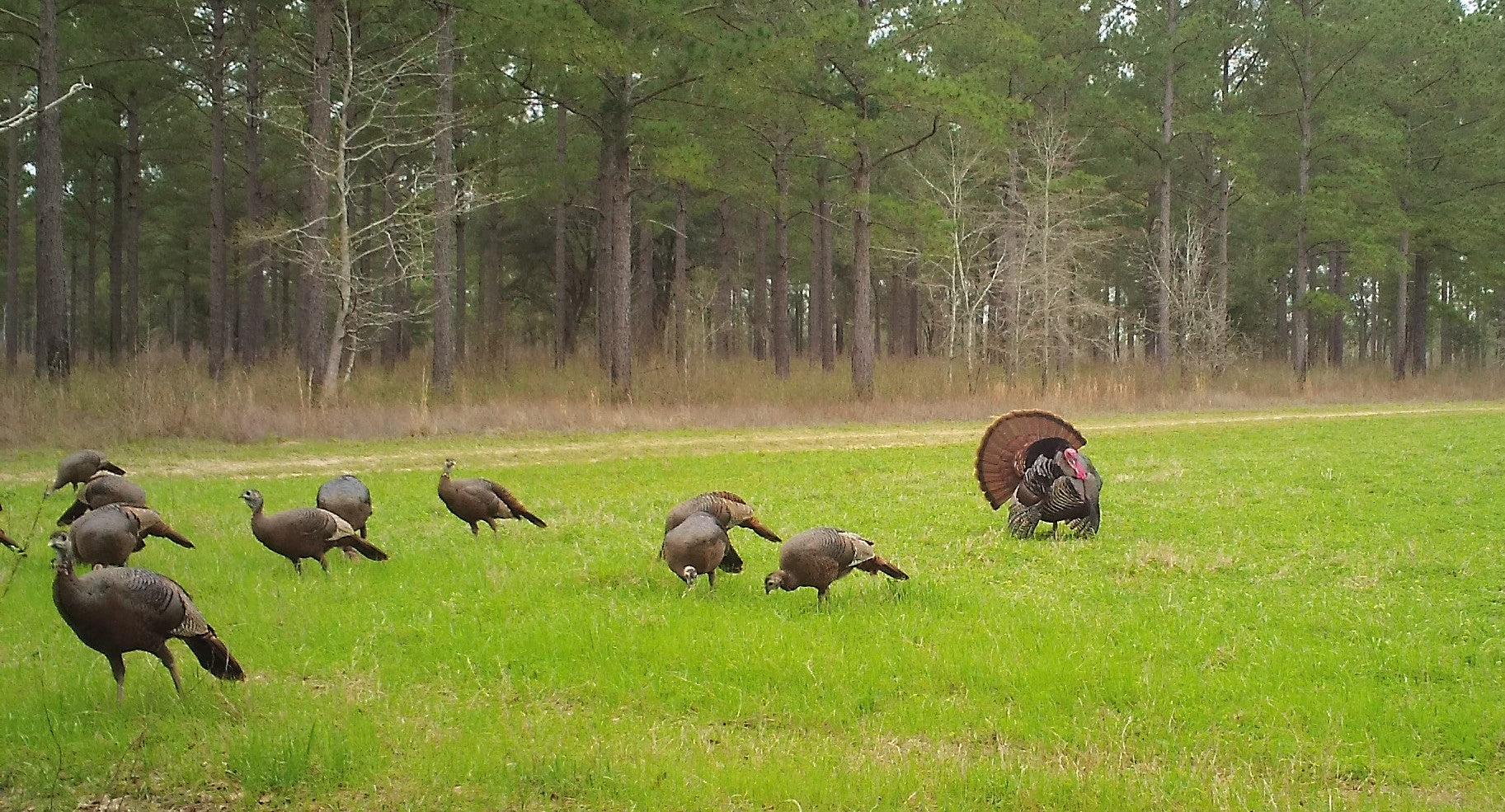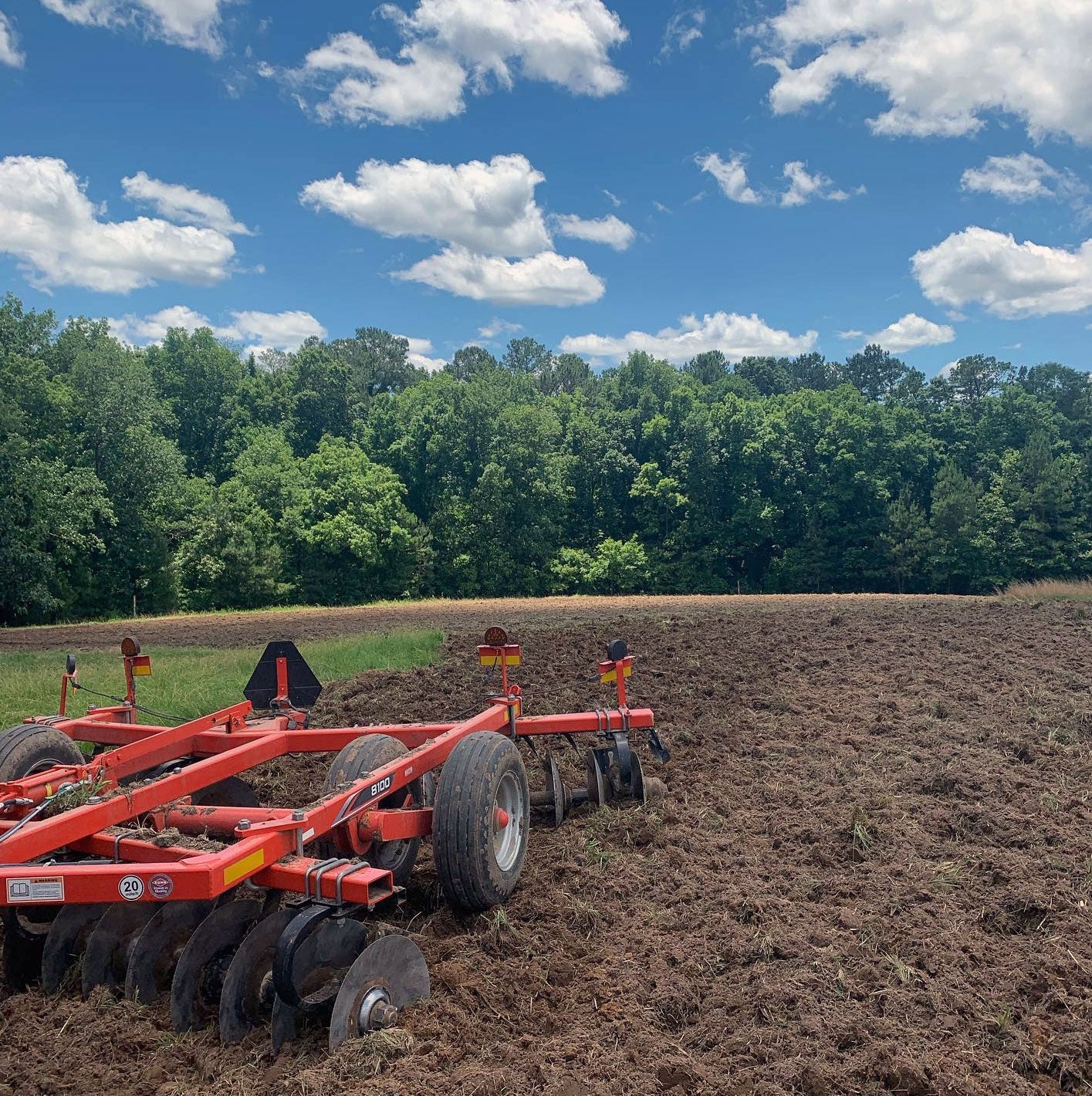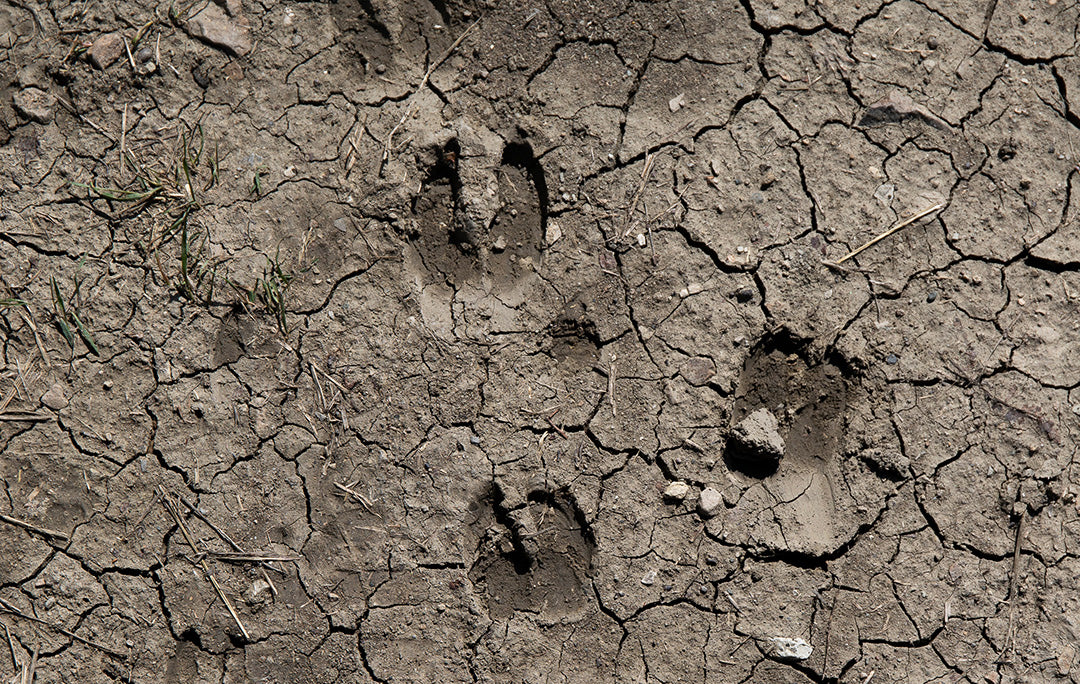Late Winter Turkey Management on Your Deer Hunting Property
 The wild turkey, in general, is wildlife conservation’s Cinderella story of the twentieth century. Wildlife management had its meager beginnings during the middle years of the century when wild turkey populations plummeted to the verge of extinction in the 1940’s. Thanks to legions of sportsmen across the country who saw the wild turkey being lost forever, wild turkey numbers now are at an all time high. Every state in the United States, except Alaska, has huntable turkey populations. Mexico and parts of southern Canada all have wild turkey available to hunt.
The wild turkey, in general, is wildlife conservation’s Cinderella story of the twentieth century. Wildlife management had its meager beginnings during the middle years of the century when wild turkey populations plummeted to the verge of extinction in the 1940’s. Thanks to legions of sportsmen across the country who saw the wild turkey being lost forever, wild turkey numbers now are at an all time high. Every state in the United States, except Alaska, has huntable turkey populations. Mexico and parts of southern Canada all have wild turkey available to hunt.It is hard to believe that the animal that is my personal favorite to hunt was almost wiped from the planet. The passion that I have for hunting these birds is what fuels me as a manager to do all I can to produce the best possible habitat for turkeys. There are many management techniques that are commonly practiced in the spring, summer, and fall to benefit both deer and turkeys. However, late winter is one of the most crucial times of the year for the two most hunted game species in the U.S. The aim of this article is to show you how to take some simple turkey management practices and apply them to a property that is already managed for deer. Although deer will be able to benefit from these practices, the techniques discussed in this article are tailored for the wild turkey.

As a wildlife manager, my goals for any target species are simple. My system has only two major goals. First, build the best nutritional habitat that I can on the land base. Second, manipulate the habitat so more of the target species will stay on the land base during the hunting season. For the wild turkey the late winter months are the most stressing time of the year nutritionally. Food availability is in short supply, not to mention the stresses of cold temperatures that the later winter days produce. Also, late winter is a critical transition period for turkeys into the spring. From my experience in managing wild turkeys, I have learned that the more turkeys you can hold on your property during late winter, the more turkeys you will have hanging around during the spring. Here are a couple of simple techniques for late winter turkey management that will allow you to be more successful this spring.

Bush Hogging (Rotary Brush Clipping)
In 2010 I had more turkeys on my personal properties than I have ever seen before during turkey season. In the past we have always had lots of birds that stayed around during deer season, but when turkey season came around most of them would leave. One of the practices I implemented in 2010, but not in the previous years, was bush hogging, or rotary brush clipping, during late winter. Bush hogging is a term used when a tractor to cut down brush pulls a rotary brush clipper of some kind. It’s a lawn mower for the woods so to speak. Also, hand operated rotary clippers can be used to get the same effect in smaller areas where a tractor is not feasible. Bush hogging is a tool that can be used to create more openings, connect smaller usable turkey habitats with each other, create feeding and bugging areas, and create hunting corridors by widening established trails and creating new roads, along with many other benefits that I have yet to understand. This practice is very common in late summer or early fall as hunters and managers prepare for the up coming deer season.

Creates Openings
During the spring, openings are a very important habitat type for turkeys. Whether it is open fields, open woods, or even open roads, you can bet a gobbler will be in full strut in one of these this spring. Late winter is a crucial transition time for turkeys as they start breaking up out of their winter flocks. They start getting spring on their mind and use these openings for social purposes. Working on these openings during late winter just adds to the openings that you already had established in food plots and other open areas designed for deer management.
During the late winter months you can bush hog in habitat types, such as bedding areas, to create openings that will not affect the deer on the property as much as in late summer or in the fall will. Spring green up will be coming soon which will provide more food for both deer and turkey. Also, the foliage that is produced will be more palatable and more nutritious than if it were not clipped. By late summer, a higher quality bedding area for deer will be ready for fall, which will hold more deer.
Another perk that bush hogging in late winter provides for deer management is shed hunting. Bush hogging creates more openings for you to walk and less thickets for the deer to drop his shed in. This makes shed hunting easier and should help increase the number of sheds you find. I know personally I found more sheds during that spring of 2010 than I ever have.

Connects Usable Habitats
One of the first major advantages I learned about bush hogging was that it gave me the ability to combine two or more smaller tracts of land to make one turkey hunting mecca. Turkeys like a big tract of timber. Typically, the more turkey ground you have, the more turkeys will stay on your property. In Mississippi we have a lot of timber company land, which means lots of pine plantations. Within a section (640 acres) of land it is common to have multiple age class stands of trees. I have noticed that if you can connect at least two older stands together with a bush hogged road or two; you can go to having zero turkeys on your property to having one or more flocks living there.
Creates Feeding Areas
Earlier I mentioned the foliage that late winter bush hogging would later produce in the spring. However, this practice also produces food immediately when the tractor pulls the brush clipper through an area. Food from seed heads and other parts of plants are broken up and scattered into a newly opened, easy to find area. Old rotten logs are turned over or broken up, which uncovers a buffet of bugs and other bite-sized critters that turkeys love to dine on. Also, bush hogging uncovers other forms of plant life that turkeys eat, such as legumes and certain mushrooms that were suppressed by the brush.

Corridors for Hunting
Almost every turkey hunter knows that turkeys love to walk up and down just about any kind of road or lane. Also, almost every turkey hunter loves to walk up and down just about any kind of road or lane. For a gobbler, it allows an easy route for him to get from one place to another while searching for hens. A gobbler also likes to use these bush-hogged roads to show off. A gobbler will often use a road at the top of a hill to strut where he is highly visible. That particular section of the bush-hogged road also becomes a corridor that the hunter can use to his advantage. These roads give the hunter an easy path to walk on, or a quiet place to maneuver into position to ambush a gobbler.
I am sure that are many other advantages to bush hogging in late winter other than the ones we listed here. All I know for sure is the hunting gets better the more you bush hog.

Broadcasting (Supplemental Feeding)
The second wildlife management tool to use in late winter is broadcasting some kind of supplemental feed. This method is definitely nothing new, but the timing of using this method is what is important. From a biological stand point; the most crucial time for supplemental feeding is during late winter for both deer and turkeys. This effectively gives these animals the added nutrition and energy to make it through the harsh winters. From a hunting standpoint, it keeps more turkeys on your hunting area throughout the winter and into the spring. This will give hunters more opportunities to harvest a healthy bird during the spring turkey season.
Broadcasting food supplements may come from a stationary feeder or may be pulled by a truck, tractor, or ATV. There are a wide variety of broadcast feeders and spreaders on the market today that will fit into any hunter’s or manager’s budget. The supplemental food broadcasted can be most any type of grain, such as corn, wheat, or milo. Pelletized rations are also effective during this time of the year.
The first thing to consider before you do any type of supplemental feeding is your state’s game laws. It seems like every state’s wildlife agency handles feeding differently. In my home state of Mississippi there is an entire page designated for supplemental feeding of wild animals outside of an enclosure. The time frame that I would call late winter in Mississippi is only about six weeks; the month of February and the first two weeks in March. According to the Mississippi Department of Wildlife, Fisheries, and Parks; legal feeding practices during this time frame include feeding corn and/or a complete pelletized ration from a fixed covered feeder (broadcast feeders included) during the month of February. During the month of March only a complete pelletized ration can be used from a feeder. Also, from February 15 through September 30, milo, grain sorghum, and/or wheat may be evenly broadcast at a rate not to exceed fifty pounds per acre. According to the state’s guidelines, in order to hunt within the vicinity of feed or a feeder, hunters must be both 100 yards away from and not within the line of sight of feed or a feeder, which contains feed.
If broadcast feeding is legal where you hunt during what you call late winter, it will be to your advantage to do so. Providing supplemental nutrition and energy to the turkey population, while keeping more of them around to hunt is definitely a no-brainer.
Blending These Two Practices
To get the most out of your property, directly combine bush hogging and broadcasting. After the brush clipping is complete, broadcast some feed into these new open areas. Place a stationary feeder in one of the wildlife openings that you created with the bush hog. These also make great areas for your game cameras to see what your turkey population looks like for the upcoming spring season. My favorite technique is to use a broadcast spreader attached to an ATV or tractor. I like to apply feed to the roads that I widened or just made earlier with the brush cutter. Turkeys love to walk these freshly opened roads and are sure to quickly find the food you put out for them, which will bring them back again and again.
There are many other late winter techniques out there that may help you in your management practices. But, these two particular techniques always seem to work, and both are easy to implement and cost effective. I wish the best of luck to all of y’all this spring, and if you use the techniques discussed in this article, you can swing some of that luck into your favor.
God Bless and Happy Hunting.
Posted by Mark Newell











Leave a comment